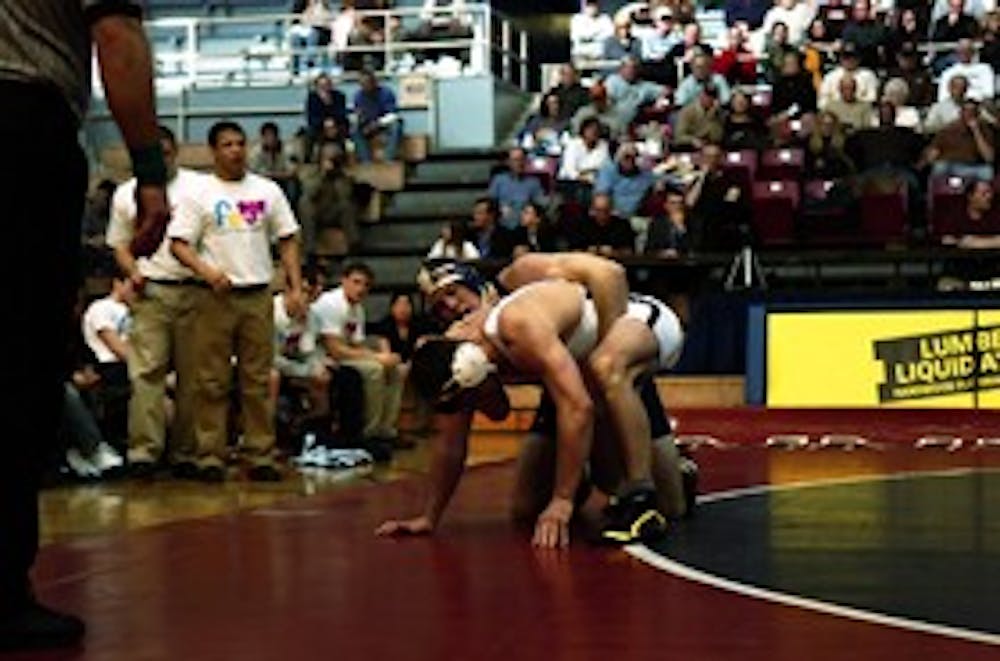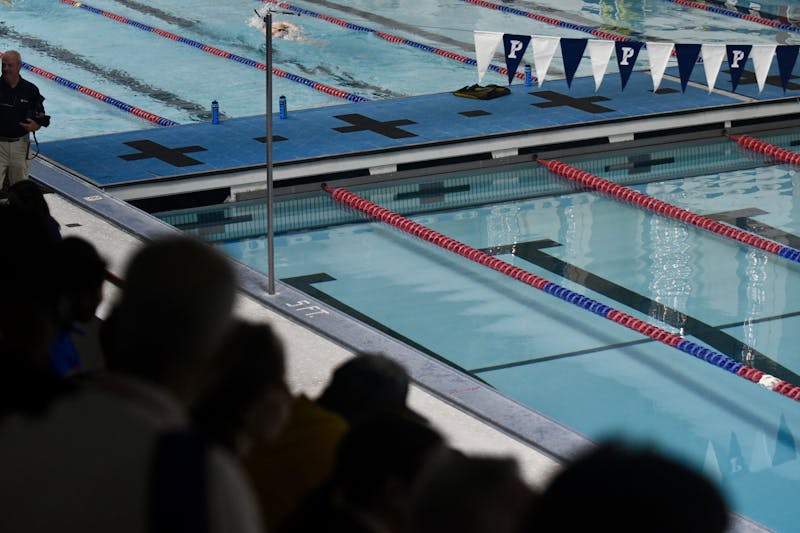
Ask any Average Joe about strategy during a wrestling match, and he will likely give you a simple answer: just pin the guy.
But talk to junior Scott Giffin and the answer will be far more complicated.
“You get that first takedown, and then usually you want to ride a guy out … get him tired on bottom.”
Though that may sound like gibberish to many, collegiate wrestling does involve much more than just pummeling an opponent to the mat.
“There’s a lot running through your head in a short amount of time,” Giffin said.
And with Eastern Intercollegiate Wrestling Association championships in 10 days, Giffin and his teammates cannot afford to rely solely on physical skill.
Depending on the strengths and weaknesses of their opponents, wrestlers can pull from a number of complicated tactics, which often have even more complex names, in order to gain points.
Wrestlers begin the first of three periods facing each other in the neutral position.
From here, the most common way to score is through a takedown, in which the wrestler successfully brings the opponent to the mat and gains control. This maneuver is worth two points.
However, if the opponent can escape, he is awarded one point. If the opponent can escape and then gain control, he is awarded a reversal, worth two points.
Different strategies develop based on the wrestler’s evaluation of his opponent’s strengths and weaknesses.
After a takedown, the grappler in control may opt to let the opponent get free and relinquish one point with the hope of taking him down again and scoring more points.
Trading two-for-one is not necessarily ideal, but if the wrestler is confident that he can score with another takedown or pin, sometimes surrendering that point is beneficial.
“You start trying to think a little bit, ‘Well, maybe if I let him go … [and] take him down again’,” Giffin said. “Then you’re just … breaking him down slowly, but surely.”
In dual meets, a win by a margin of less than eight points — called a decision — awards the winning team three points.
However, if a wrestler wins his match by between eight and 14 points, the grappler is awarded four points. And if the spread reaches 15, the wrestler is awarded five points. Points are added to the team’s total which determines the meet’s end result.
The most dominating way to win, though, is the pin — which ends the match when a wrestler holds any part of his opponent’s shoulder blades to the mat.
Along with the massive ego boost to the pinning wrestler comes a monumental six points for his team.
With so many intricacies, the role of coaching has a great impact on the strategies that are employed in the match as it is often difficult to see what exactly has to be done to get control of the opponent or get out of trouble.
This is where coaches like Penn’s Rob Eiter step in.
“They have a bird’s eye view,” Giffin said. “I’m just trying to score.”
“But I think from that bird’s eye view, they can actually see what the other guy is vulnerable to,” he added.
And while the X’s and O’s may not be scribbled on a chalkboard, the coaches still call out specific plays — or in this case, moves — for the wrestler to utilize.
In a sport that can be misconstrued as uncivilized or even barbaric, there turns out to be more that meets the eye.
The Daily Pennsylvanian is an independent, student-run newspaper. Please consider making a donation to support the coverage that shapes the University. Your generosity ensures a future of strong journalism at Penn.
DonatePlease note All comments are eligible for publication in The Daily Pennsylvanian.







